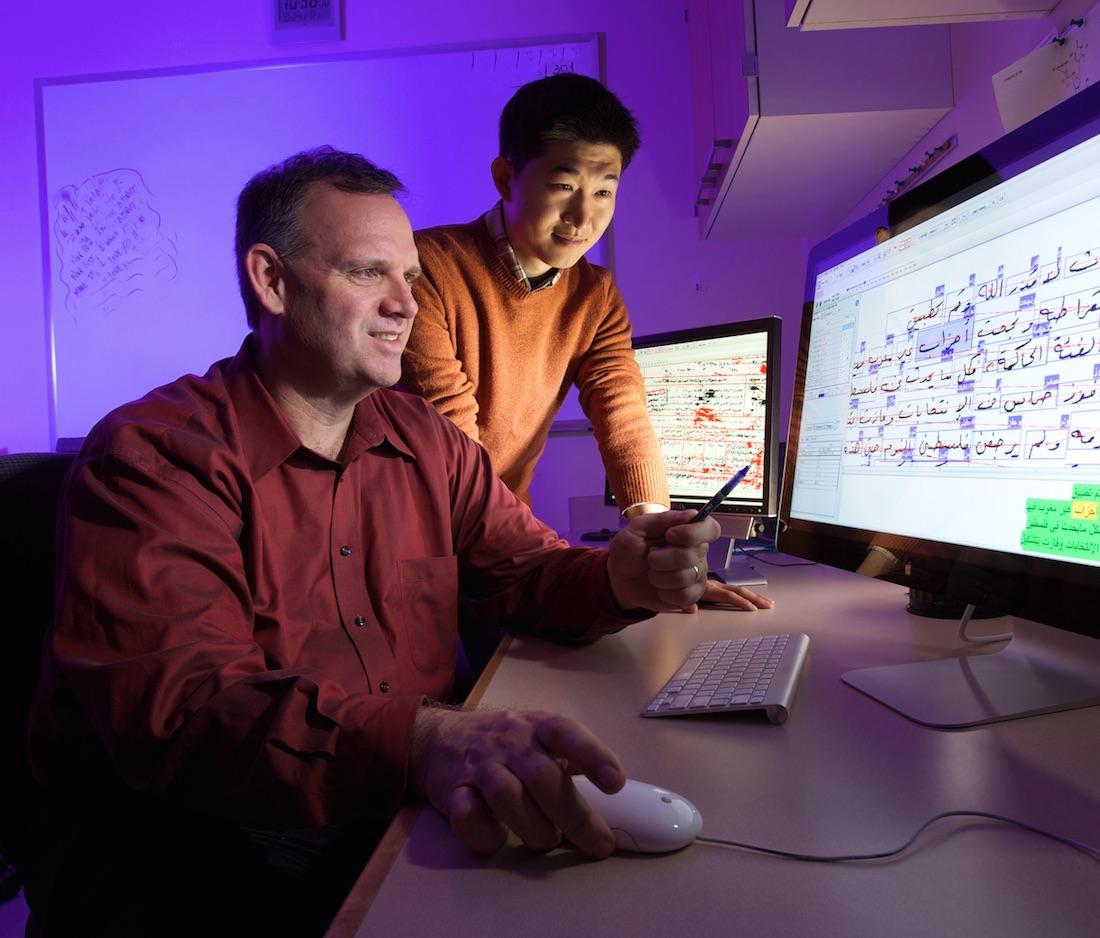
David Doermann has been leading one of the U.S. government’s top programs to combat fake news, specifically manipulated images and video.
He’s also directed machine translation efforts in South Korea, flown with linguists in U.S. military planes as part of a voice analytics program, and helped the National Institutes of Health (NIH) validate research results.
Doermann, a research scientist in the University of Maryland Institute for Advanced Computer Studies (UMIACS), is one of the nation’s leading experts in media forensics, which involves collecting, analyzing and interpreting audio, images and video for traces of manipulation.
For the past four years, he’s been putting his skills to good use assisting the federal government as a program manager with DARPA, the Defense Advanced Research Projects Agency tasked with funding research to address national security issues.
“It’s the basic innovation arm of the U.S. government that was set up to prevent strategic surprise,” Doermann says.
A lot of the technologies we use today—like the internet, GPS, and digital voice assistants—were originally developed by DARPA for military use.
More recent DARPA activities include cutting-edge research on climate change, cybersecurity, and political discourse on Twitter.
Last spring, Doermann was interviewed by national news outlets on the government’s role in identifying one of the nation’s current security threats: fake news.
One of the DARPA programs he developed called MediFor, short for Media Forensics, runs algorithms on photos and videos to determine if they have been doctored.
“That was the one program I started and pushed all the way through,” Doermann says.
MediFor was originally launched five ago in response to the increase in images and videos produced by terrorist organizations.
“U.S. officials needed to be able to analyze them and see that they were real,” he explains. “This is something the government saw coming long before fake news and all of the other things that have gotten attention lately.”
Doermann’s tenure at DARPA came after working at UMIACS for more than 20 years. After graduating from UMD in 1993 with his doctoral degree in computer science, he did the bulk of his work in the Laboratory for Language and Media Processing, a lab he launched after working with his academic adviser, the renowned Azriel Rosenfeld, in the Center for Automation Research.
Already adept at working on media forensic problems for the federal government, Doermann approached DARPA with several research ideas and they hired him as a program manager.
All DARPA appointments are temporary. “When you get there, you have a badge with the date you’re going to leave four years later,” he says. “That’s the way you do innovation.”
Instead of physically doing the research himself, Doermann managed funding and directed teams working on various pieces of different programs.
“It’s very rewarding because you get to take your vision of the problem and have people solve it, and you have a big checkbook,” he says.
As the program manager of MediFor, Doermann oversaw 13 organizations each working on algorithms to test a different aspect of media integrity. For example, one algorithm assesses the consistency of lighting on faces, and another the directions of shadows.
The program currently has more than 100 algorithms that can process tens of thousands of images then produce a report. But the challenge, Doermann says, is to improve MediFor so that it can analyze media at a larger scale—eventually millions of images at a time—as the problem of fake news grows and it becomes easier to alter or create realistic looking images on a personal computer.
“As there is a bigger need for this, our ability to detect things will get better and better,” he says.
Now that Doermann’s DARPA appointment is done, MediFor will be handed off to a new program manager, just as Doermann took over a voice analytics project, known as Robust Automatic Transcription of Speech (RATS), from someone else.
RATS was developed for U.S. airborne surveillance programs. It collects all voice signals—from handheld radios to cell phones—distinguishes speech from noise, and then identifies languages and speakers so that analysts can listen to the most significant conversations happening below.
Doermann also helped the NIH address falsified research results—images that were doctored to make research appear more relevant or to receive more funding.
“It doesn’t happen much, it showed up around four percent of the time, so MediFor is addressing that problem for them,” he says.
One of Doermann’s favorite aspects of his DARPA appointment was getting to work with the people who would utilize his research firsthand, like the linguists in the surveillance planes or service members in South Korea.
“Typically when you are a researcher, you throw [your work] over the fence and hope someone catches it,” he says. “But [at DARPA] you can see both sides of the problem—you get first-line access to the military and the people who really need this. It’s a nice way to see that what you’re doing really could make a difference.”
Next up for Doermann is an academic career with the University at Buffalo starting August 1. He’ll be teaching and organizing a university-wide initiative on artificial intelligence.
Although Doermann is looking forward to his new role at Buffalo, he says that his DARPA appointment was a highlight of his career in computer vision.
“Ultimately, it’s very rewarding to go to a place like DARPA because you get a different view of how the world works,” he says. “It’s an essential part of being able to have an impact on your field that you really can’t do in any other way.”
—Story by Maria Herd